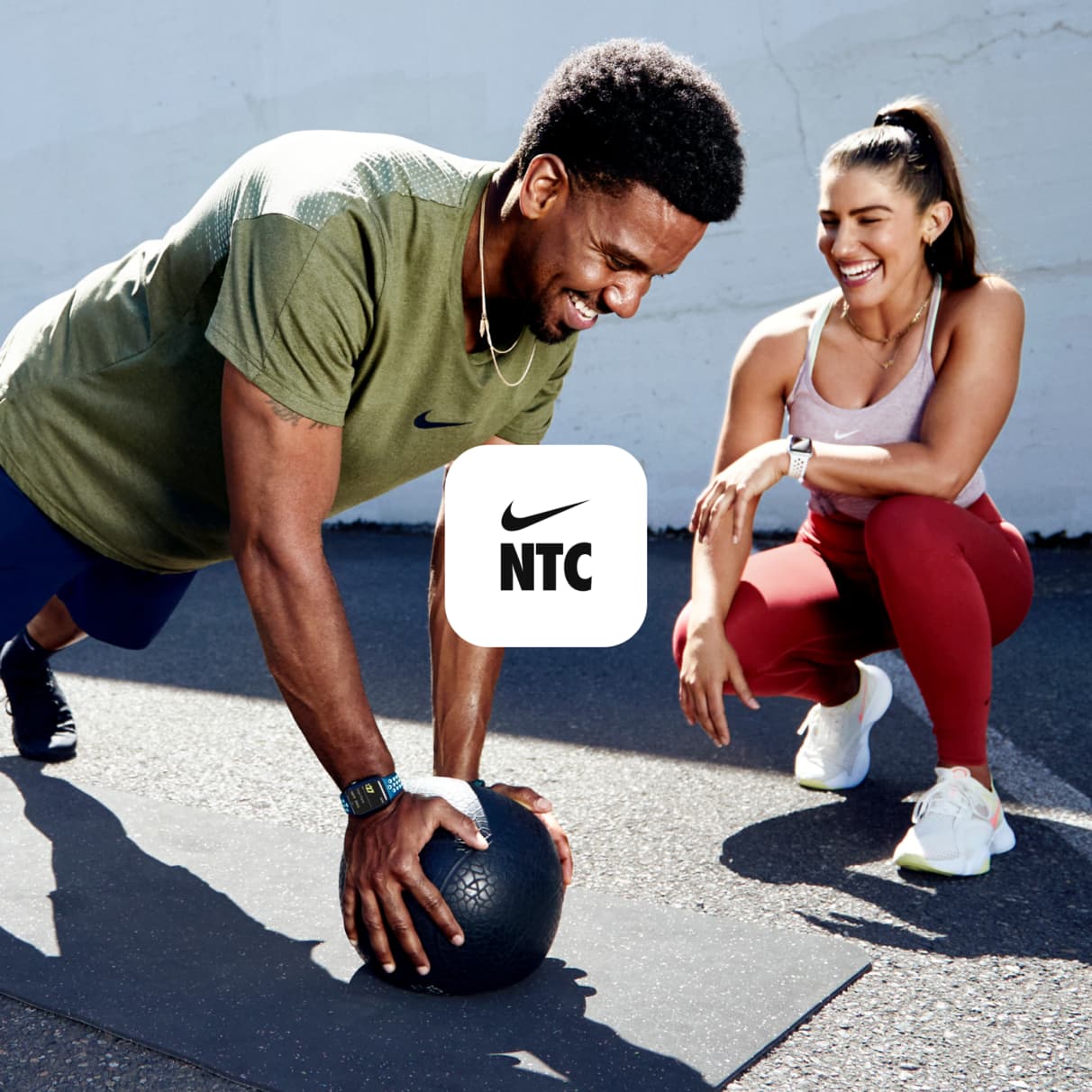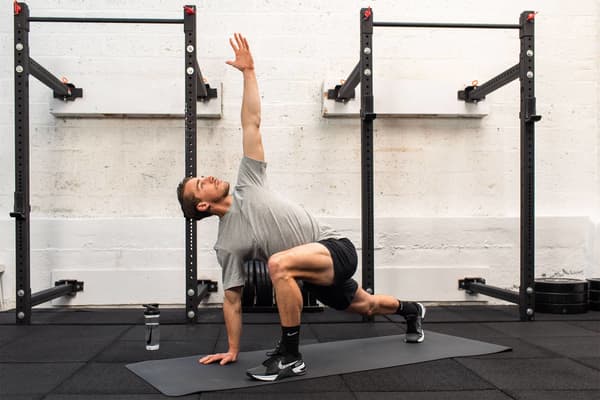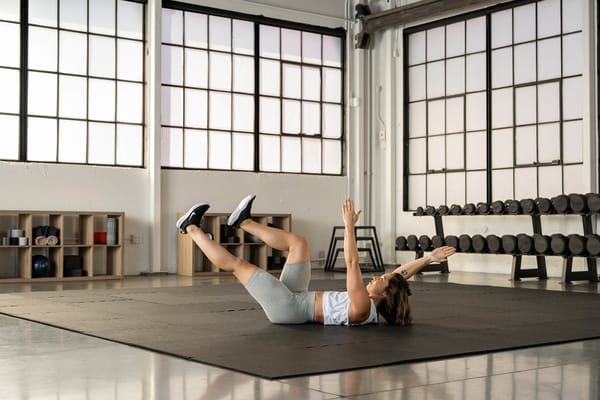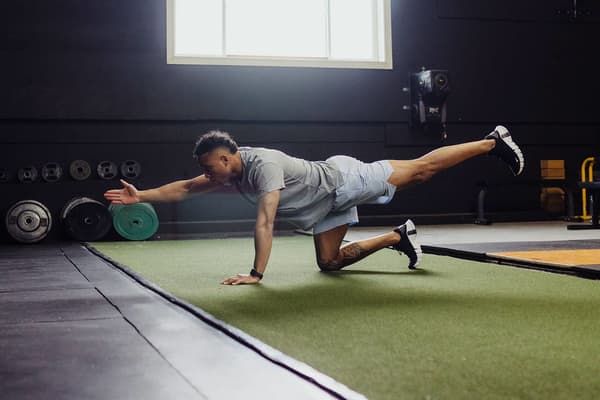Sette varianti del plank approvate dai trainer
Sport e attività
I personal trainer certificati ci svelano le varianti del plank di cui non potrai più fare a meno per rinforzare contemporaneamente il core e la parte superiore e inferiore del corpo.
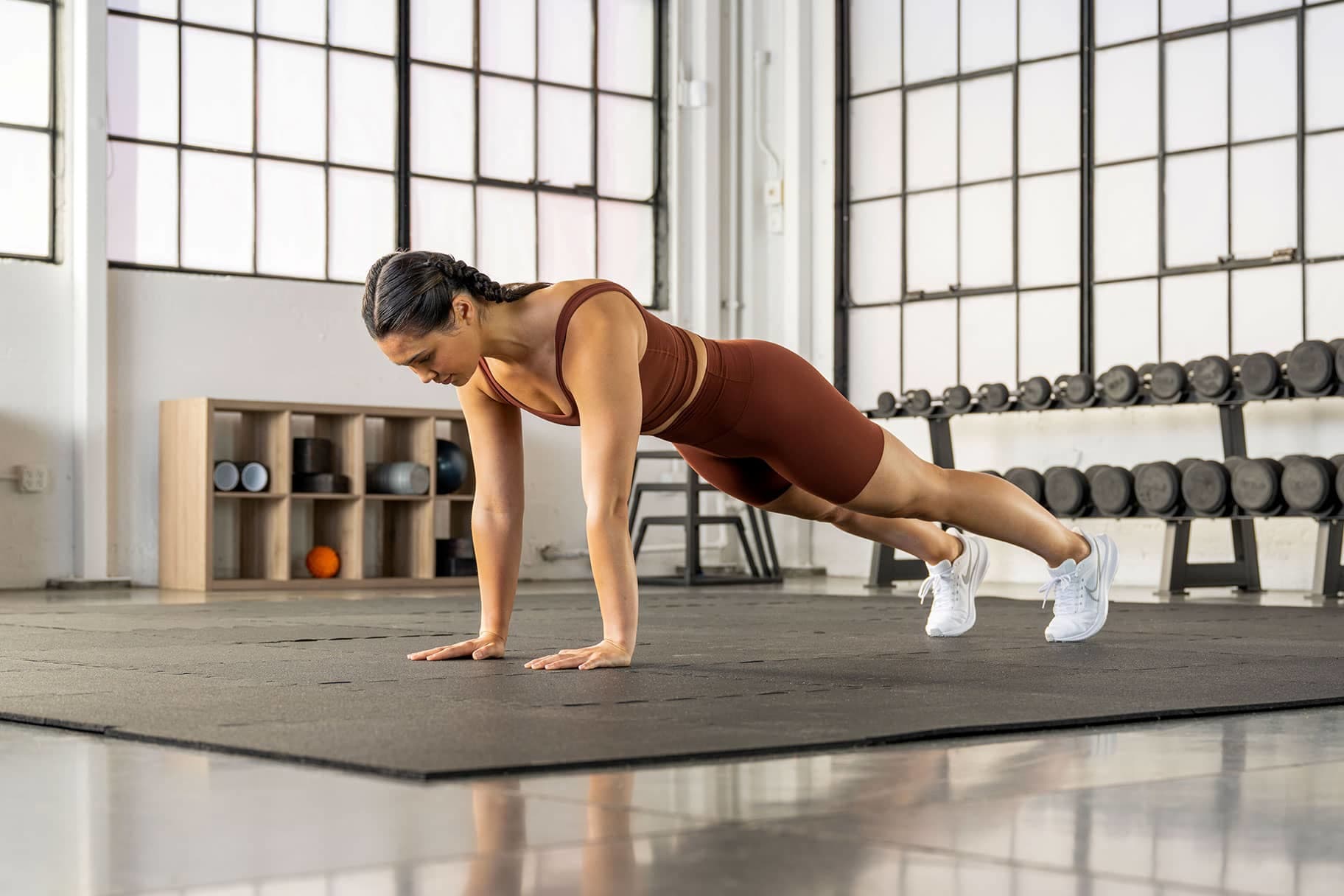
Come eseguire correttamente il plank
Pierre consiglia di immaginare un filo attaccato alla colonna vertebrale tra le scapole che viene costantemente tirato verso l'alto in modo che la parte superiore della colonna vertebrale sia nella posizione corretta (un ottimo suggerimento è pensare di sollevare la colonna vertebrale verso il soffitto). I talloni, invece, dovrebbero essere allineati con la base del piede per attivare maggiormente i muscoli quadricipiti. Per assumere questa posizione, immagina di estendere il piede spingendo i talloni verso la parete posteriore.
Alemar raccomanda inoltre di mantenere il bacino in retroversione durante l'esecuzione del plank tradizionale ed evitare di abbassare le anche o incurvare la colonna vertebrale.
Non dimenticare di respirare! "Contrai gli addominali, ma senza trattenere il respiro per via della tensione", continua Alemar. Certamente, all'inizio potrà sembrare un po' strano, ma secondo Alemar questo consente di mantenere la posizione più a lungo.
Le varianti del plank preferite dai trainer
Vuoi aggiungere i plank alla tua routine? Alemar e Pierre ci svelano i loro esercizi preferiti.
1.Plank on Knees
If you’re new to planking and can’t hold a traditional plank for 30 seconds, performing planks on your knees is a great place to start, Alemar said. Starting with this variation will allow you to get acclimated to the movement and learn and reinforce proper movement patterns.
- Start by lying on your stomach with your hands slightly outside your chest.
- With control, push through the palms of your hands as you extend your arms. Be sure to engage your core and maintain a neutral spine.
- If you want, lift your feet off the ground to balance on your knees.
- Hold for 15 seconds. If you’re more advanced, hold for 30 seconds.

2.High Plank
This is one of the most popular plank variations and rightfully so. This variation places a greater emphasis on the pectoral and serratus muscles, Alemar said. When performing high planks, make sure your wrists are in line with your shoulders or slightly behind to further engage the serratus muscle.
- Start by lying on your stomach with your hands slightly outside your chest and your toes tucked.
- With control, push through your hands and feet, lifting your entire body off the ground simultaneously. Be sure to engage your core and glutes. Your head, spine and legs should be in a neutral position. Your shoulders, elbows and wrists should also be aligned.
- Be sure not to round or arch your back and to keep the palms of your hands flat on the ground.
- Hold for 15 seconds. If you’re more advanced, hold for 30 seconds.

3.Side Plank
This plank variation is excellent for developing stability in your spine while also challenging the hips and obliques, Alemar said.
- Start lying on your side with your body in a straight line from head to toe.
- Depending on your ability, you can either place your forearm on the ground or your hand. If you’re placing your forearm on the ground, make sure that your elbow is in line with your shoulder. If your hand is on the ground, make sure your hand is underneath your shoulder.
- With control, push through your forearm and hand as you simultaneously lift your hips off the ground.
- Your body should be in a straight line from head to toe and your full hand or forearm should be on the ground. Be sure to engage your core and squeeze your glutes.
- Hold for 15 seconds on each side. If you’re more advanced, hold for 30 seconds on each side.

4.Reverse Plank
If you’re bored with your current ab routine, take it to the next level with reverse planks, which not only target your core muscles, but also the glutes, hamstrings and lower back.
- Start seated with your legs bent and your hands behind your glutes with your fingers pointing towards your feet.
- From here, extend your legs, keeping your heels on the ground.
- With control, push through your hands as you lift your glutes and legs off the ground.
- Keep your chin in a neutral position and squeeze through your glutes to maintain proper form.
- Hold for 15 seconds. If you’re more advanced, hold for 30 seconds.

5.Plank Kick Through
Ready to challenge yourself? Try adding plank kick throughs to your routine. This movement is dynamic, and will challenge your core, arm, oblique and hip strength while generating heat throughout your body, Pierre said.
- Start in a traditional high plank position.
- With control, begin to shift your weight to the right side of your body as you rotate to the right, bending your left leg at the knee and lifting your left hand off the ground while simultaneously extending the right leg across the body.
- With control, return to the starting position, then repeat the same movement on the opposite side.
- This counts as one rep. Perform 10 reps.

6.Superman Plank
This plank variation is excellent for all levels, Pierre said. It will challenge your stability in addition to your core and can always be regressed if necessary.
- Start in a traditional high plank position.
- With control, simultaneously raise your left hand off the ground and extend it out in front of you as you lift your right toes off the ground. The leg being lifted does not need to come more than a few inches off the ground. Be sure not to shift your weight to the left or right side of your body.
- With control, place the left arm and right leg back down, returning to the starting position.
- Repeat on the opposite side.
- This counts as one rep. Perform 10 reps.

7.Plank to Squat
If you like more dynamic, diverse movements, consider adding this variation into your routine. It hits all the muscles a traditional plank would in addition to stretching and opening the hips and activating the glute muscles.
- Start in a traditional high plank position.
- With control, either walk or gently jump your feet to the outside of your hands coming into a squat. You can lift your hands off the ground to make the movement more dynamic.
- With control, gently jump or walk your feet back to a high plank position.
- This counts as one rep. Perform 10 reps.

Come integrare i plank nel programma di allenamento
Vuoi aggiungere gli esercizi per il core alla tua routine? Secondo Alemar, il modo migliore per integrare i plank nel tuo programma di allenamento è scegliere due varianti (idealmente adatte ai principianti, a meno che tu non abbia già esperienza), come il plank sugli avambracci e il plank laterale, ed eseguire tre serie di ciascuna per volta. Puoi tenere la posizione per 10 o 30 secondi in base al tuo livello, ma senza compromettere la correttezza della postura.
Se trovi difficile tenere il plank per 30 secondi, Alemar suggerisce di provare la variante sulle ginocchia o di ridurre la durata. Quando sarai in grado di mantenere la posizione per 30 secondi e di eseguire tre serie, Alemar consiglia di incrementare la durata del plank di 10 secondi alla volta fino a raggiungere il minuto di tempo. Successivamente, potrai passare alle varianti più impegnative.
L'aspetto più affascinante della costruzione dei programmi di training è che esistono diversi modi per raggiungere lo stesso obiettivo finale. Pierre preferisce inserire i plank durante il riscaldamento per attivare il core, alzare la temperatura corporea e, in generale, riscaldare il corpo.
Alemar invece consiglia di aggiungere i plank come terzo o quarto esercizio in mezzo ad altri movimenti composti, cioè quei movimenti che fanno lavorare più gruppi muscolari contemporaneamente. Ad esempio, potresti eseguire una serie di squat e di trazioni seguite da un plank sugli avambracci.
È importante sottolineare che, per allenare il core in modo efficace, si dovrebbero eseguire anche altri tipi di esercizi di rafforzamento che attivano muscoli del core diversi, oltre ad aggiungere alla routine movimenti dinamici, rotazioni e anti-rotazioni.
Come per qualsiasi altro tipo di esercizio, è bene non sovraccaricare i muscoli; Alemar consiglia di eseguire movimenti specifici per il core due o tre volte alla settimana.
A prescindere dalla variante di plank, ricordati di assumere sempre la postura corretta. Le spalle, i polsi e i gomiti devono essere allineati e la colonna vertebrale deve rimanere in posizione neutra (abbassa quei glutei!).
Testo di Tamara Pridgett
